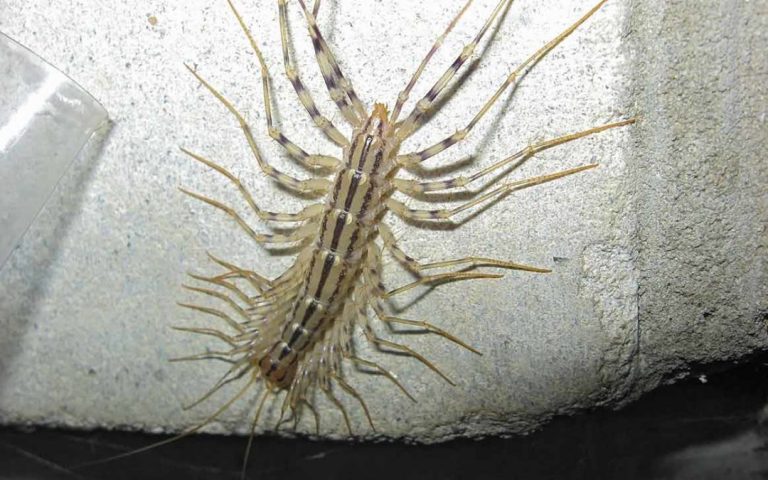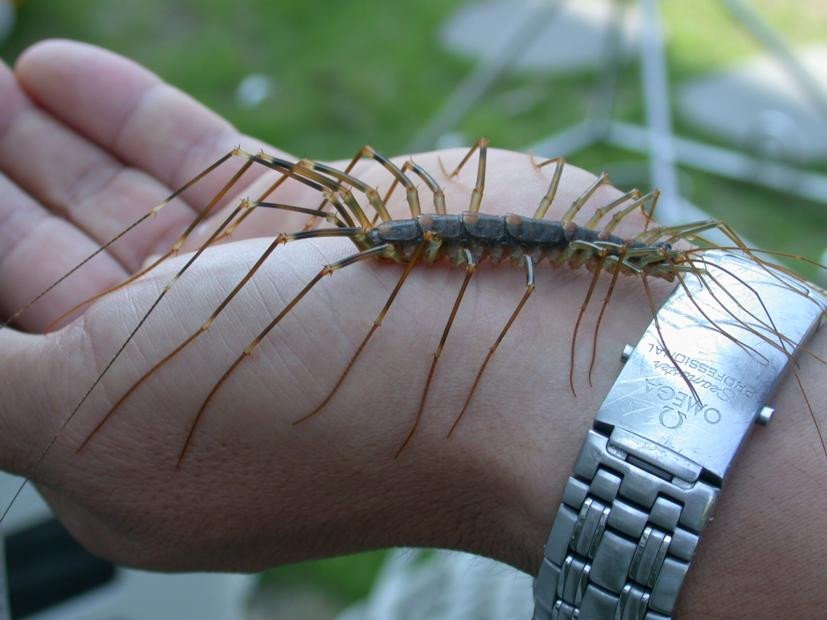Table Of Content

The house centipede is capable of biting a human, but this seldom occurs. The worst one can usually expect from a house centipedes bite is some pain and a slight swelling at the location of the bite. However, the bite can cause health problems for those few who are allergic to the extremely mild venom of its bite, which is similar to that of most normal centipedes. If you’re someone who can’t stand the sight of worms or cockroaches, or if you have arachnophobia, chances are you won’t appreciate having house centipedes around you, either. House centipedes are common household insects known for their many legs that help them scurry past you in the blink of an eye.
Pantry Foods That Never Expire

If a bite does occur, it may cause localized pain, redness, and mild swelling, similar to a bee or wasp sting. However, these symptoms usually subside within a few hours, and medical attention is rarely required. While house centipede bites are not typically a cause for concern, some individuals may be more sensitive or allergic to their venom, leading to more pronounced symptoms.
What to Do After a Pest Control Treatment by Aptive
Centipedes are generally considered nuisance pests, as they do not pose significant health or property threats. However, all house centipedes have poison jaws with which they inject venom into their prey. Yes, house centipedes are capable of biting, but their bites are rare and generally not a significant concern for humans.
Are House Centipedes Dangerous?
House centipedes feed on small arthropods, including pest insects, so their presence in large numbers may indicate another underlying pest issue. Coleoptrata showed the ability to distinguish between possible prey, avoiding dangerous insects. They also adapted their feeding pattern to the type of hazard the prey might pose to them. House centipedes have been observed to groom their legs by curling around and grooming them with their forcipules. There are various ways to keep centipedes out of your home—or at least make it more difficult for them to move in—beyond banishing the bugs they eat.
The Government Is Paying People to Upgrade Their Home Comfort, Here’s Why
These chemicals harm small insects but pose no serious threat to humans. The worst side effects from centipede bites are usually mild pain and swelling. Unless provoked to defend themselves, house centipedes rarely bite people or pets and mostly prefer trying to escape threatening situations. Also, although house centipede venom is not as toxic as some other centipede species and their bites rarely cause any serious effects.
Yes, Kentucky has scorpions. How to get them (and other critters) out of your home - Lexington Herald Leader
Yes, Kentucky has scorpions. How to get them (and other critters) out of your home.
Posted: Mon, 22 May 2023 07:00:00 GMT [source]
They simply find dark corners to live in when they’re not hunting for food. House centipedes are smaller centipedes that are commonly found on the inside of homes. They tend to live in warmer, more humid climates and prefer to hunt during the night.
Centipedes: They bite, but don't kill them. Here's why - Yahoo News Canada
Centipedes: They bite, but don't kill them. Here's why.
Posted: Fri, 14 Apr 2023 07:00:00 GMT [source]
Its body is yellowish grey and has three dark-colored dorsal stripes running down its length. They do not instantly change direction when light is suddenly shone at them, but will retreat to a darker hiding spot. When you choose Aptive, you’re choosing a happy, healthy home. Depending on where you live, you may be familiar with managing pest-ridden garbage cans.
How often do you need a run-in with a centipede to have a problem, though? That’s the question, and the best way to answer it is to learn about these fascinating (and, yes, sometimes frightening) creatures. House centipedes aren’t dangerous, even though they can bite. With that being said, you should always exercise some element of caution when picking them up. Spiders, wasps, and other insects with defensive tools can easily take the centipede out. They may sneak up on the bug from behind so that the target has fewer opportunities to fight back.
They live anywhere from 3 to 7 years, depending on the environment. The house centipede is an arthropod, a genus that includes insects as well as centipedes, millipedes, arachnids (spiders) and crustaceans (such as lobsters). The house centipede originated in the Mediterranean but now can be found across Europe, Asia, and North America. The result is a bite that’s more painful than anything else, and should you get bit, expect the swelling and discomfort to mimic a bee sting. It should subside within a few hours, and maximum, a few days.
However, that may not matter much to you if you wake up to find one crawling in your bed or jump 10 feet in the air when one peeks out of your drain as you’re getting ready to bathe. The toxins are responsible for the inflammation and mild burning sensation we discussed earlier. Once again, those who are more sensitive to insect allergens might experience more irritation than most. So, it’s a good idea to seek medical attention if you experience an infection or serious reaction. Now, just because the house centipede isn’t dangerous to humans, that doesn’t mean that you should pick them up or try to interact with them!
Sprays or dusts should be applied to sites where centipedes are suspected such as cracks and crevices in concrete slabs, block walls, etc. Harborage reduction is the second most important management tactic. With appropriate fillers, fill or seal cracks and crevices in concrete slabs and block walls.
A bright red head tops its long, shiny black body, and roughly 20 pairs of yellow legs help it scurry around. This species, also known as the eastern bark centipede, can be found in the southeast, including—you guessed it—in Florida. This type of centipede grows to around three inches long and is described as aggressive. Most people find Florida blue centipedes in their backyard, living under logs or rocks, but it’s not uncommon for them to seek refuge in homes after a big rainstorm. Unlike ants, spiders, roaches, mosquitoes, and many other types of insects, most people don’t have run-ins with centipedes regularly. Because of this, it can be even more frightening when we do since we’re not sure what to expect.
Clearing any debris that may become damp (such as leaves, dirt, grass clippings, or weeds) from around the perimeter of your home may help deter them from entering. If a centipede is found indoors, you can get rid of it with a vacuum. However, you should contact a licensed pest professional if you suspect an infestation. You can find one near you with the helpful zip code search below.
The amount of pain you feel will be determined by the amount of venom injected into the bite. Their bites may be comparable to bee stings in terms of pain. Larger centipedes may deliver more venom, causing intense pain.
House centipedes can bite you, but those instances are pretty rare. Most live outside, primarily under large rocks, piles of wood and especially in compost piles. Centipedes are found throughout the United States and the world. They are typically found in areas of high moisture, such as in rotting logs, under stones, in trash or piles of leaves/grass. When they invade homes, centipedes are most commonly found in damp basements, crawlspaces, bathrooms, or potted plants.
The reason for this is that leaving the centipede remains where it is may attract more centipedes. Centipedes are carnivores that will eat the remains of dead centipedes. So, get rid of their remains so that you don’t have to worry about attracting more to your area. People tend to be terrified of them because of their large number of legs and quick speed. Keep reading to learn if they can harm you and how to get rid of them in your home.
No comments:
Post a Comment